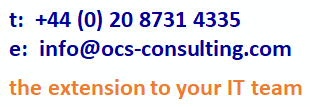Content Management Systems are packaged software; software built for and used by a large number of organisations.
When software vendors build packaged software they reduce the cost to all organisations that use it while improving its robustness as the cost of making it robust can be spread over a large number of organisations.
Content Management Systems allow an organisation to create and maintain content in a cost effective manner. Generally, Content Management Systems are seen as maintaining content for websites and that was their original focus. However, recognition that content has always been with organisations, software vendors have extended Content Management Systems into Document Management. Document Management Systems allow organisations to manage large volumes of content for various communications channels including the web.
Content existed in organisations and websites existed before Content Management Systems were built to maintain content. Why are they necessary? For websites, the characteristics determining whether a content management system is necessary are:
- large amounts of content
- frequent update of the content
- the need for co-ordinating multiple contributors and reviewers.
Those characteristics would justify a Web Content Management System. Document Management Systems should be considered when the organisation would benefit from co-ordinated creation and maintenance of large bodies of existing content created for users outside the website but shared with the website as necessary.
The alternative is clear. Don't acquire a Document Management System if there is no real need to share content between other users within the organisation and the website. The case for sharing content must be strong as Document Management Systems introduce an order of complexity that can drive up cost and re-ordering of business process without necessarily adding value to the organisation.
Even a Web Content Management System should not be acquired if the site is likely to be small and the frequency of update of that content is low. In those cases, a traditional web master approach is sufficient with your own IT support staff or an outside supplier creating and updating the site with new or revised content as necessary. Frequently, that approach is a good starting point to reduce risk as it can give you a feel for what your ambitions should be without making a large investment.
For further information on any aspect of your website development email: JohnN@ocs-consulting.com


